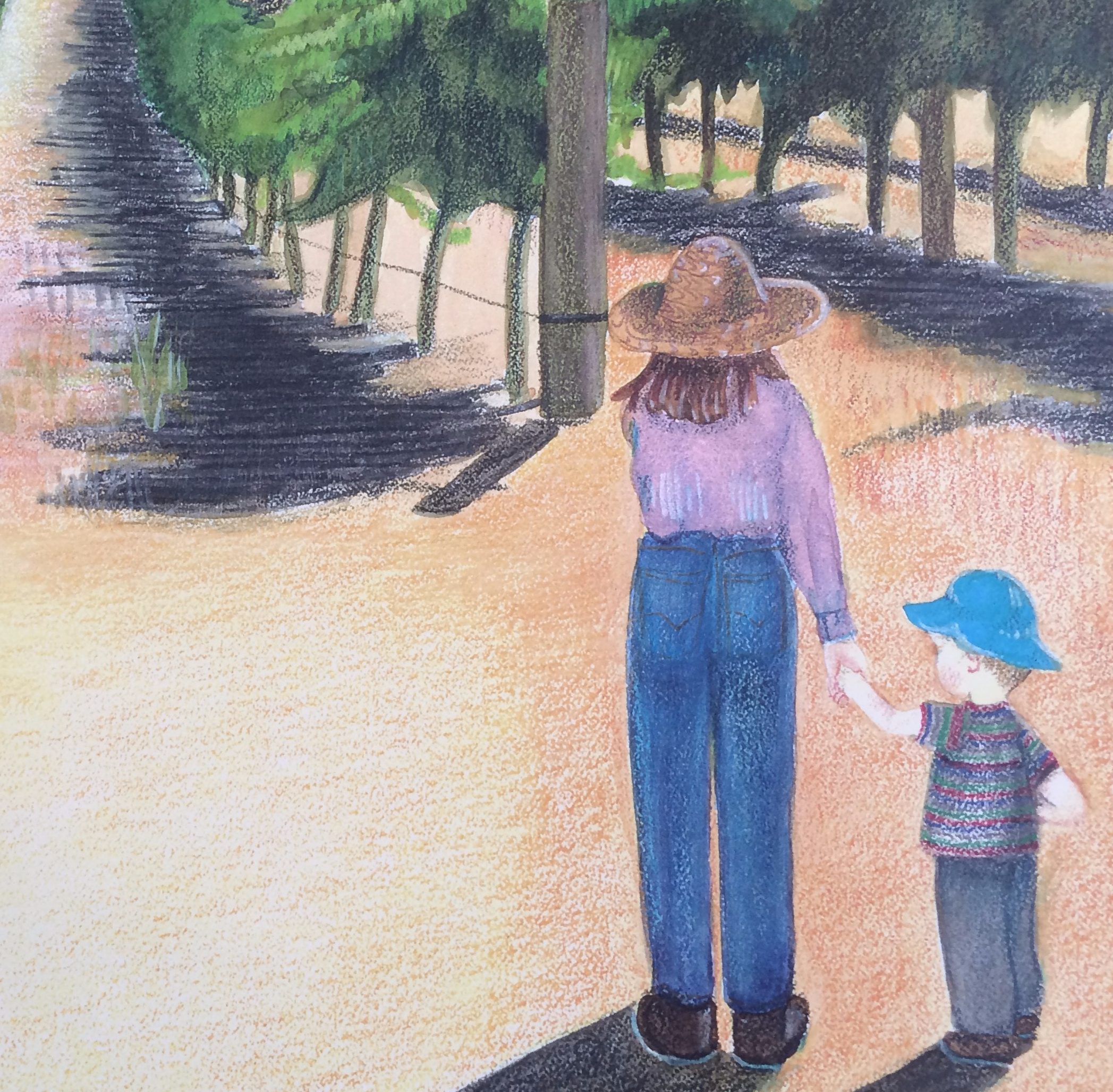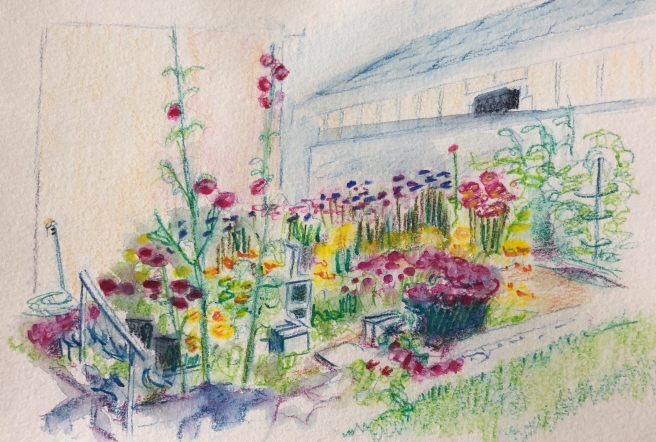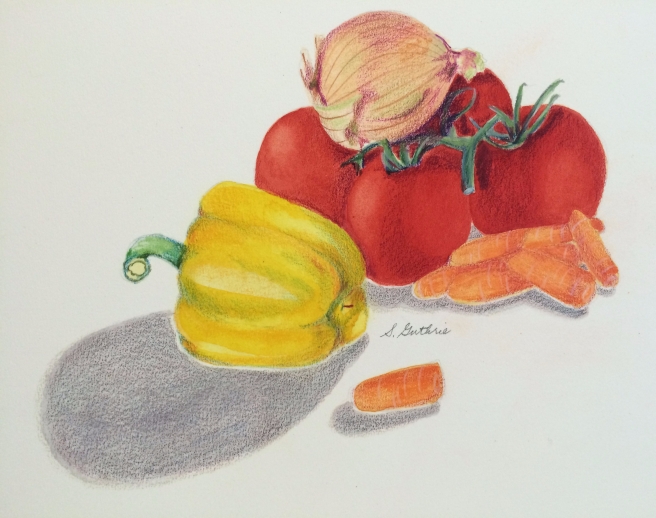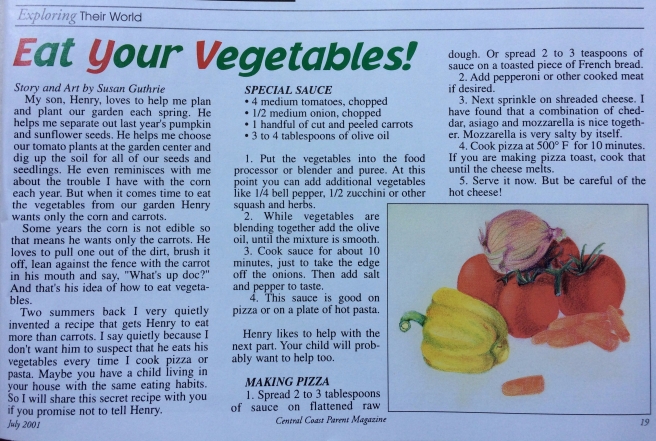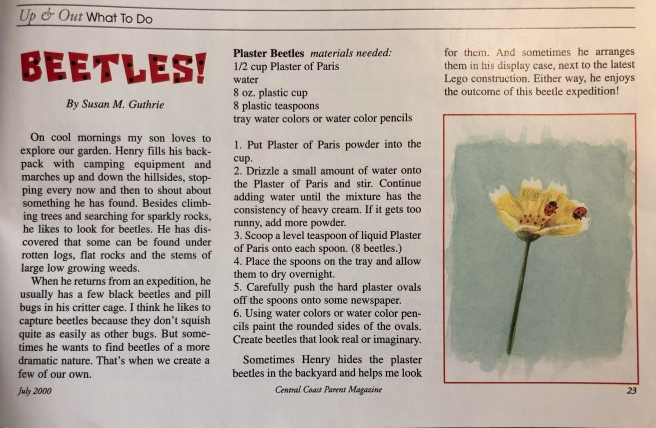
Thinking of last week’s art and story about flowers and insects reminded me of an article I did for a children’s magazine when my son was little and we lived in Paso Robles. As you can see the art for last week’s story and this week are of insects on flowers, but the art for the July 2000 article featured a project a parent might do with his or her child. Last week’s story was actually linked more to the art rather than the words, I think. And even though my son just graduated from college, I decided to see if the “beetle making” procedure I wrote about still worked as well as it did almost 20 summers ago. It’s been a hot week here in So Cal, so making and painting the Plaster of Paris beetles was a fun indoor project. How well I remember thinking of such things to do to keep a little kid entertained when it was just too hot to be outside. (Oh yes, Paso Robles can easily get to over 100 on a typical July day. Of course the best remedy for that kind of heat involved putting the dog, the boy and few beach toys in the back of the station wagon and heading to Cayucos for the day. Ahhh…)
The art for this July 2000 magazine article shows a couple ladybugs, or ladybird beetles, on a favorite CA wildflower. The common name for this flower is tidy tip and it is part of the genus, Layia. It can be found in lovely blankets of bright yellow on some of the grassy hills of CA in spring. I love the jagged edges of the flower with a definite line that seems to have been painted onto each flower petal. I have actually seen them in shockingly bright circles of yellow in a “fairy ring” (vernal pool in Fairfield—July 1, 2017) And as far as I can tell, you can see ladybugs flying around most months in California except in winter. It seems that they like to find warm spots to hibernate when it gets cold and I have a personal story about that. When my then husband and I were living in 1989 Walnut Creek (East Bay) I put some ladybugs on the potted plants I had out on our deck. There was quite an infestation of aphids that summer and I was sick of picking them off my flowers. I wanted some heroic ladybugs to come and eat the dreaded aphids. So, I bought a bag of ladybugs at a nursery. I remember carefully following the directions on the bag that described how to release them into your garden. Here’s what you do: On a coolish evening, lightly spray your plants with water. Then cut open the bag and gently shake out the beetles onto your plants. (I guess the water is to give them something to drink.) The idea is to distribute them as the sun is going down onto damp plant material. This is so they will hang around and not fly off immediately as they probably would if it was warm and the sun was high in the sky. (I don’t actually remember what time of year I did this—it was probably early fall.) After a time, I noticed the aphids were gone. I wondered if the ladybugs had done the trick or the evenings had just gotten too cool for the aphids to survive. I actually forgot all about the ladybugs until sometime after Christmas when I moved a pot that was close to the deck enclosure wall. And what did I see? There were at least 100 hibernating ladybugs clinging to that wall. I realized I may have compromised the little red nest of beetles and quickly put the pot back exactly as I had found it. I went out there everyday that winter, trying to view the ladybugs in the dark crack between the pot and the wall, but didn’t dare move anything. I couldn’t see anything! When the warmer spring weather finally turned up I finally got up the courage to move the pot. There wasn’t a single ladybug to be seem anywhere. It was always my hope that I hadn’t disturbed them too much and they had stayed there all winter. Such are the funny wishes and dreams of a gardener.
If you are not interested in making Plaster of Paris ladybugs or other beetle you won’t want to read the directions for making your very own insects as described in my July 2000 story. But, if you are a kid at heart, like me, you will want to make them just for fun.
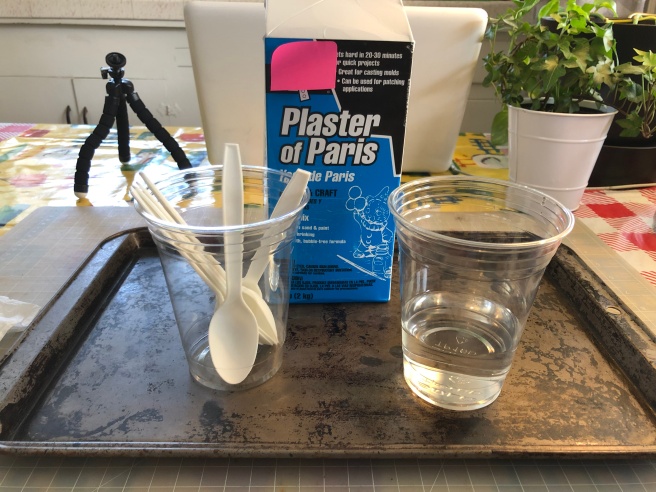
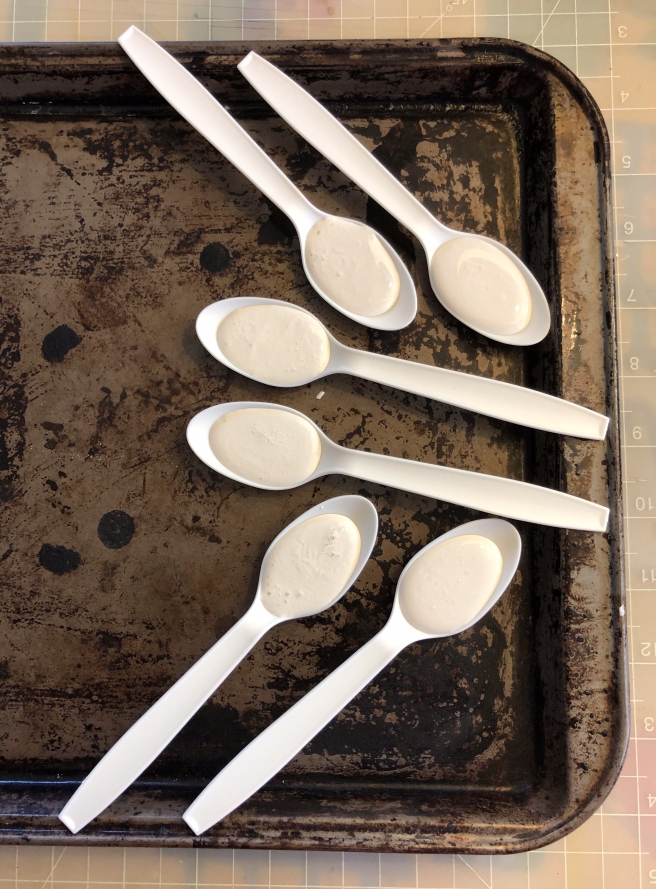
I happened to have on hand all of the materials you see here, except the Plaster of Paris. I had the plastic cups, water, old cookie sheet and compostable spoons. Remember, this is California and of course I used compostable spoons for this project, but there was no such thing in July 2000, so I used non-compostable spoons. (Of course back then I would have washed them after I did the project and used them again.) Time to reread the directions as stated in that story. (You may have noticed I only made 6 this time around.)
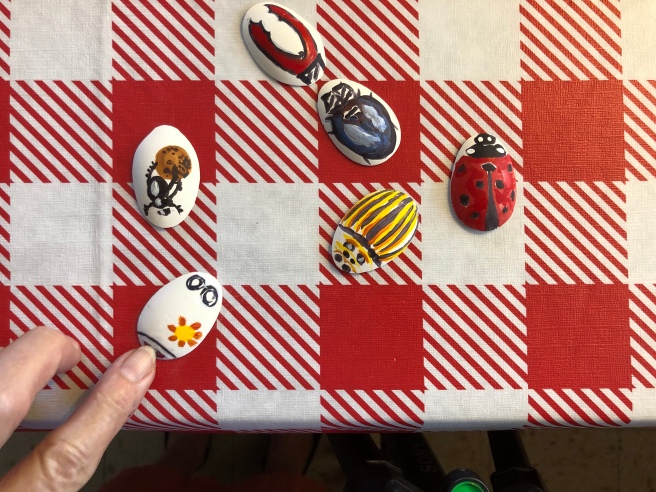
Once the Plaster of Paris dried, I popped out the little beetle shapes and began planning the destiny of each one. Oh, and just for the record, the potato beetle is actually a pest and is not a happy sight for potato farmers, but I liked the colorful stripes and made one anyway. I also thought myself clever in making a two-part stag beetle and a dung beetle, and of course the 1960’s VW beetle was amusing to me…a kind of “tongue in cheek” beetle.
As you can see I also made a ladybug. And while mixing the perfect shade of red I remembered another “true” ladybug story. It goes something like this: Once upon a time one CA girl followed a northern CA creek in some northern CA woods. Some of the time she walked in the water, but most of the time she had to scramble up and over boulders to stay with the narrow creek filled with slow moving water. She imagined great winter storms of water moving the large and smoothly rounded rocks all around her. By and by she climbed up onto a large boulder and decided to take a break. She laid down on the rock and got as comfortable as she could. It was pretty enchanting there, looking up into the trees while listening to the creek swoosh past the rocks. Just above her there was quite a swarm of ladybugs and she thought this an even better detail to later remember and retell to others. A couple of them landed on her. She wondered if this was some kind of woodland welcome, but almost instantly they began biting her. Each bite actually felt like a kind of sharp “pin prick” pinch. She jumped up immediately—getting off that rock as soon as possible. She quickly moved away further down the creek. After she had gone a few feet she turned around to see if they were following her. Thank goodness they stayed right there, hovering in a bright red swarm directly above that rock. She was surprised and a little horrified at what had just happened. When she later told someone of the encounter they just laughed and told her that just wasn’t possible.
I think most people believe in a ladybug’s benevolence rather than as a swarming nipping terror in the woods. (BTW, I just asked Siri, “Can ladybugs bite?” and she responded, “Ladybugs can bite humans.”) So, even though I obviously like having them in my garden, I prefer to see them from a safe distance, or as little bits of painted Plaster of Paris.
I have to say that I probably spent too much time painting all these little beasts—working too hard to get the detail just right. I mean, little chips of Plaster of Paris are pretty ephemeral, and I think planning and making them was actually the most fun. But throughout this whole process I was reminded of making them long ago with my 5 year old son. They didn’t look this detailed and finely painted. I remember using watercolors with him, encouraging loose and colorful application of pigment. Such a project is pretty messy, but perfect for a little kid. And other than my adding two definite eyes on each one, I don’t remember whether each one could be identified as any particular kind of beetle. I will try to save these to show him sometime. I wonder if he will remember making them? Of course he won’t remember, he was 5! The end.
